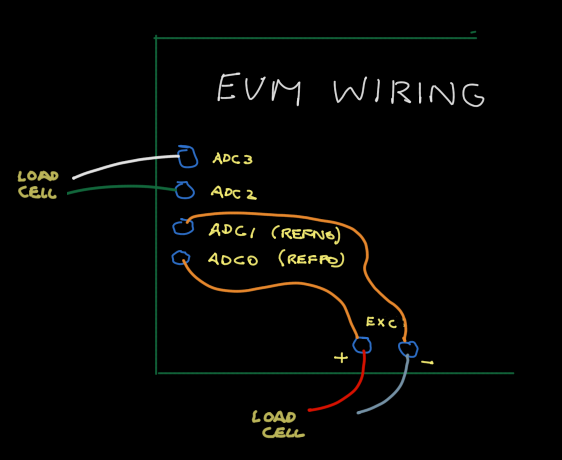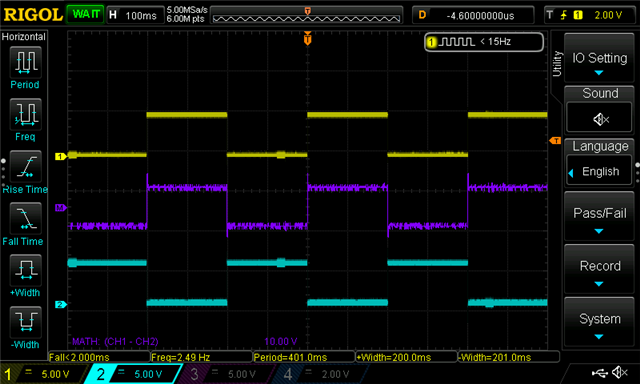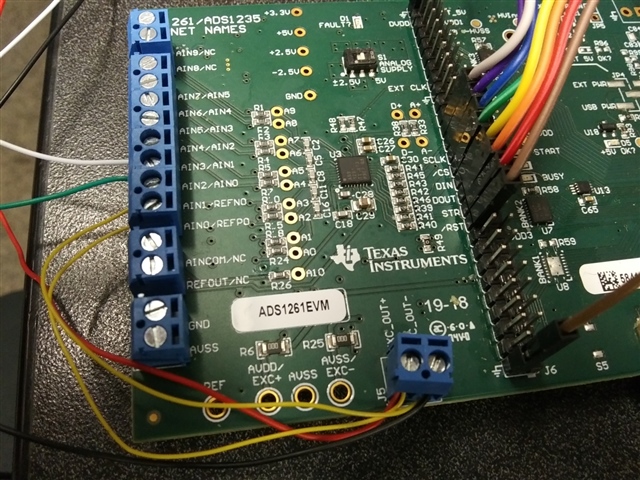Other Parts Discussed in Thread: ADS1261, ADS1235
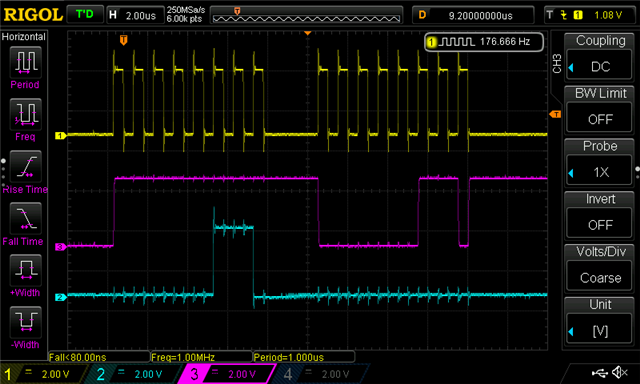
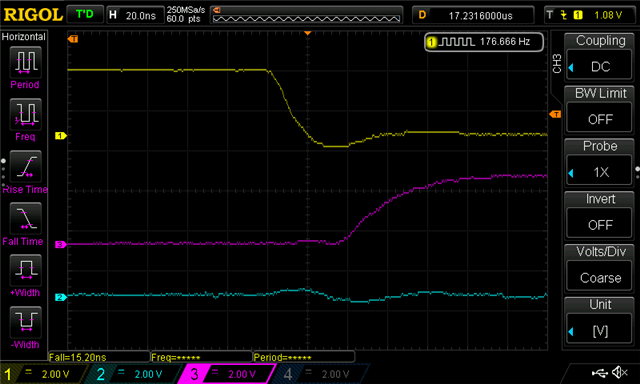
I am using the EVM with a separate ESP32 processor to drive the board.
I juper'd JP1 to tri-state the onboard processor as stated in the manual.
All works well .. Almost.
I send a 0x06 command and the 'echo' returns a 0x07 on MISO.
The scope traces tell the story ..
The first trace is the 'overview' .. sending a 0x06 and receiving (supposedly) a 0x06 back.
The second trace is a closeup of the last bit .. showing only 40ns for the ESP to catch the zero. It gets a one instead which is why I get a 0x07 back.
The ADS1261 only allows 40ns on the final bit instead of the 'normal' half clock.
This appears to be too fast for the ESP32.
Am I doing something wrong?
The clock is 1Mhz; MSB First; Mode1
The trace order on the scope images is,
Clock (yellow), MISO (purple), MOSI (blue).
Thanks, Tom




